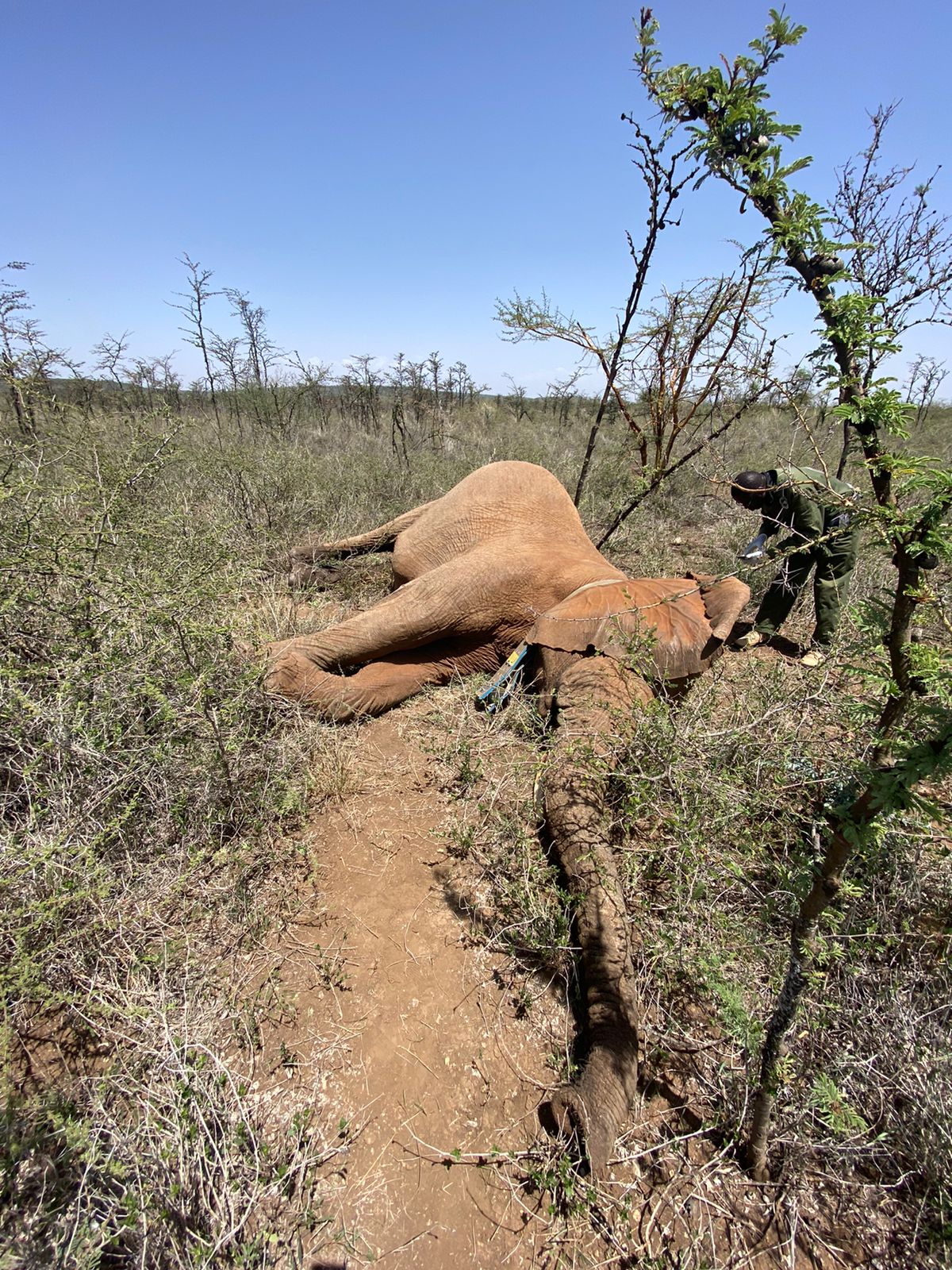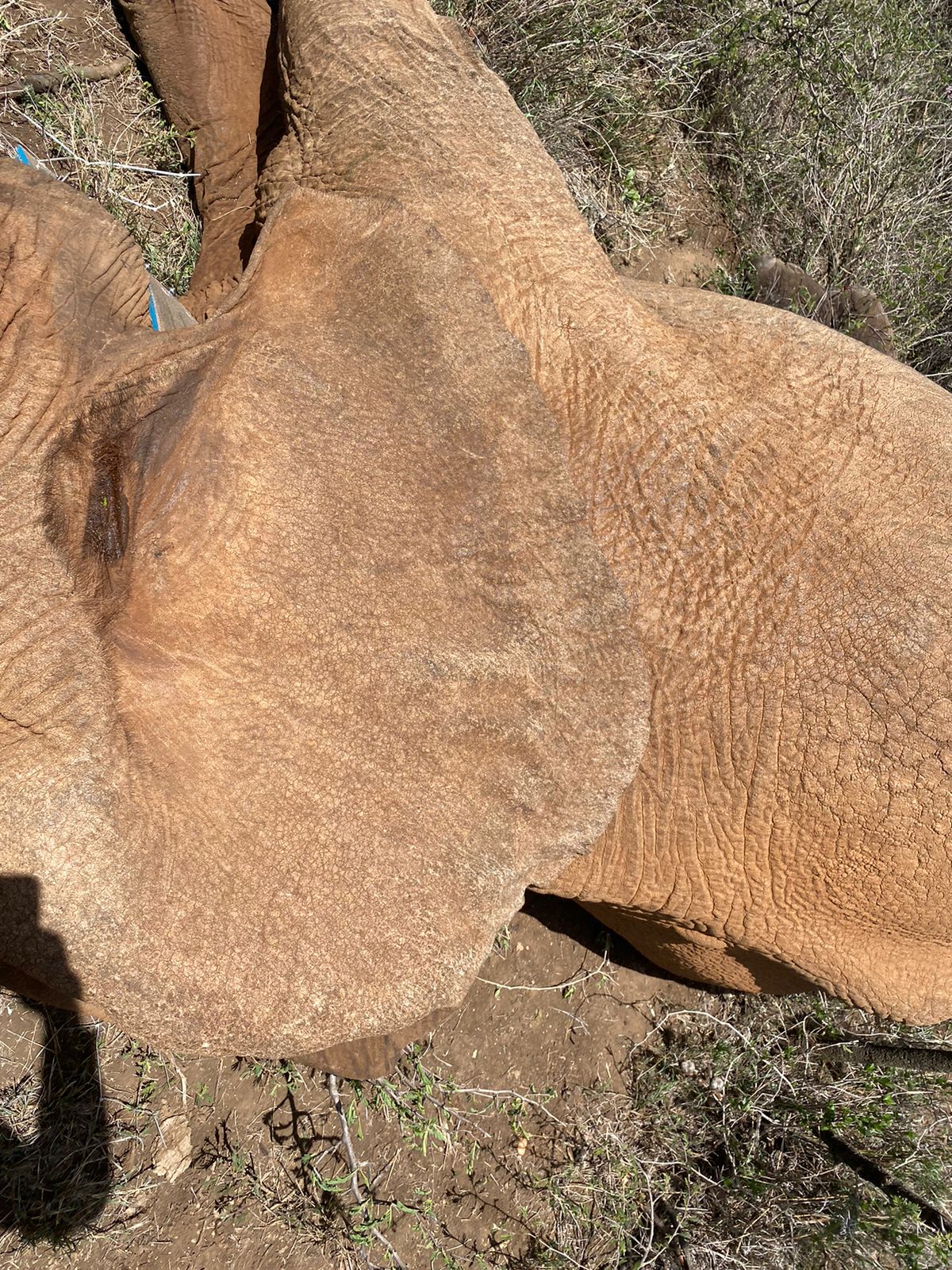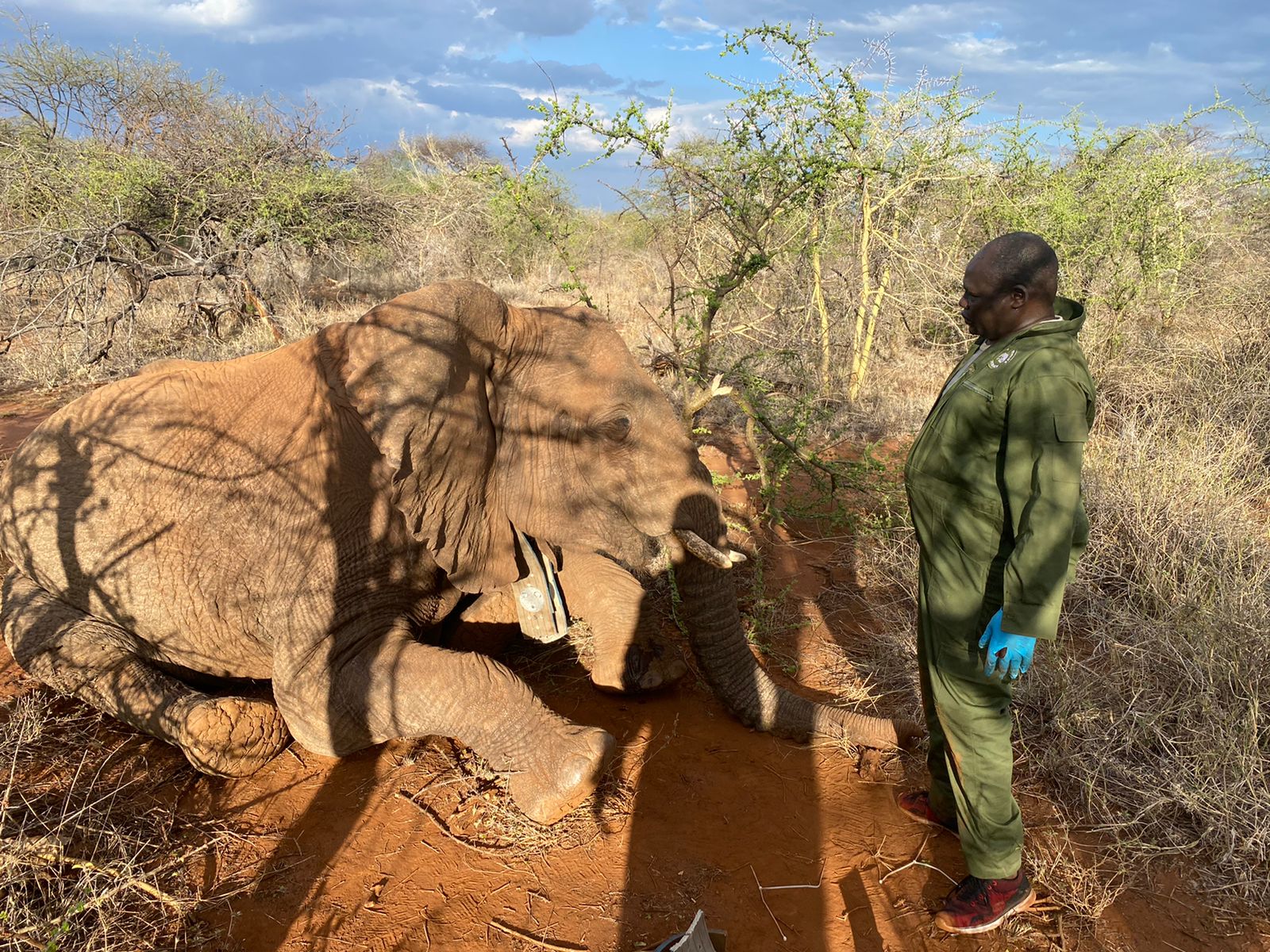The community in Engata Entarit in Naroosora have been growing crops on the banks of a tributary flowing into the Ewaso Ngiro River. This area is a fertile plateau that sits between the Loita Plains, where Mara Elephant Project has two ranger teams, and the Rift Valley. The placement of the area between the Rift Valley Ecosystem and the Greater Mara Ecosystem means it is potentially a corridor for elephants connecting the two ecosystems. Unfortunately, these fields of crops in between are very appetizing for elephants passing through, which has increased conflict in the area.
In November 2021, tensions were on the rise in this area when a young man died as a result of wounds sustained from an elephant. In response, the Wildlife Research and Training Institute (WRTI), Kenya Wildlife Service (KWS) and MEP moved swiftly and collared a female elephant named “Indy”, sponsored by the Indianapolis Zoological Society, that was in a herd of over 60 elephants. Since collaring Indy, WRTI, KWS and MEP have been able to track the herd’s movements and they moved out of the area to the border of the Maasai Mara National Reserve. The MEP “Bravo” ranger unit alongside South Rift Association of Land Owners (SORALO) rangers have been patrolling this area to keep both wildlife and the community safe.
KWS Vet Dr. Limo with WRTI, KWS and MEP collared elephant Indy.
On January 16, a report came into our rangers that a herd of eight elephants that included one rouge elephant was killing livestock in the community. The MEP ranger unit responded and on January 27, alongside CEO Marc Goss in the leased helicopter, and KWS Vet Dr. Titus Kaitho, they darted the aggressive female elephant and collared her to allow for WRTI, KWS and MEP to respond immediately if she enters community land again; her name is “Natasha”.

KWS Vet Dr. Titus Kaitho during the WRTI, KWS and MEP collaring operation for Natasha.

KWS Vet Dr. Titus Kaitho during the WRTI, KWS and MEP collaring operation for Natasha.

A close up of WRTI, KWS and MEP collared elephant Natasha.
We will also use her tracked movements to hopefully show connectivity between the Mara and Shompole/Magadi ecosystems or if there has been a loss due to an increase in farms, human settlement and fences. The collaring is done under a long-term collaboration between MEP, KWS and WRTI to understand habitat connectivity, resource allocation and conflict mitigation as well as increase elephant protection.



